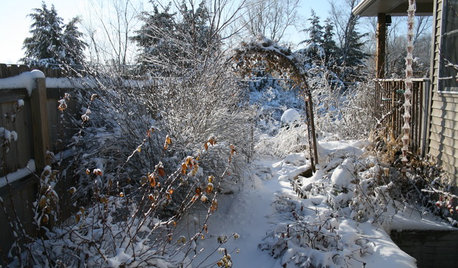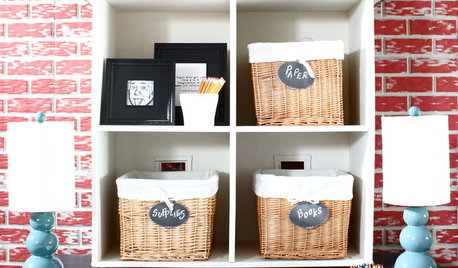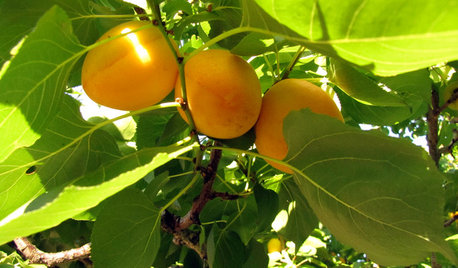Wrapped for Winter, Zone Pushing Silliness
rideauroselad OkanaganBC6a
10 years ago
Related Stories

GARDENING GUIDESGarden Myths to Debunk as You Dig This Fall and Rest Over Winter
Termites hate wood mulch, don’t amend soil for trees, avoid gravel in planters — and more nuggets of garden wisdom
Full Story
LIFE6 Ways to Beat the Winter Blahs
Snow and dark days dampening your spirits? These ideas will have you looking on the bright side
Full Story
LIFEHouzz Call: Show Us Your Nutty Home Fixes
If you've masterminded a solution — silly or ingenious — to a home issue, we want to know
Full Story
HOUSEKEEPINGTo-Dos: Your March Home Checklist
It’s time to rid yourself of winter’s heaviness and set up for spring
Full Story
WINTER GARDENINGPruning Secrets for Exquisite Roses
Encourage gorgeous blooms year after year with this time-tested advice on how to prune your rosebush in winter for health and shape
Full Story
HOUSEPLANTS8 Essentials for Healthy Indoor Plants
Houseplants add so much to our homes — and can thrive when grown in the right conditions. Keep these tips in mind
Full Story
CONTEMPORARY HOMESHouzz Tour: A Brave Addition Breaks New Ground
An Edwardian cottage gets a radical renovation with a dynamic deck that wraps a couple and 2 children in style
Full Story
KIDS’ SPACESCreate a DIY Homework Station They’ll Really Use
Start the school year on the right foot by setting up an inviting study zone with things you may already own
Full Story
MONTHLY HOME CHECKLISTSYour Fall Home Maintenance Checklist
Prep your house and yard for cold weather with this list of things to do in an hour or over a weekend
Full Story
EDIBLE GARDENSHow to Grow Your Own Apricots
Velvety fruit, pretty blossoms and interesting bark make apricot trees a delight — and they’re great for smaller gardens
Full Story






palustris
seil zone 6b MI
Related Discussions
Another 'silly' question about rose leaves?
Q
Ready for Winter, Pushing the Zone
Q
Zone-Pushing - planned or unplanned
Q
Zone Push Holly
Q
nippstress - zone 5 Nebraska
rideauroselad OkanaganBC6aOriginal Author
mad_gallica (z5 Eastern NY)
seil zone 6b MI
AquaEyes 7a NJ
AquaEyes 7a NJ
User
opheliathornvt zone 5
sergeantcuff
User
AnneCecilia z5 MI
seil zone 6b MI
User
ingrid_vc so. CA zone 9
rideauroselad OkanaganBC6aOriginal Author
AnneCecilia z5 MI
rideauroselad OkanaganBC6aOriginal Author
kittymoonbeam
rideauroselad OkanaganBC6aOriginal Author
seil zone 6b MI
AnneCecilia z5 MI
rideauroselad OkanaganBC6aOriginal Author
nippstress - zone 5 Nebraska